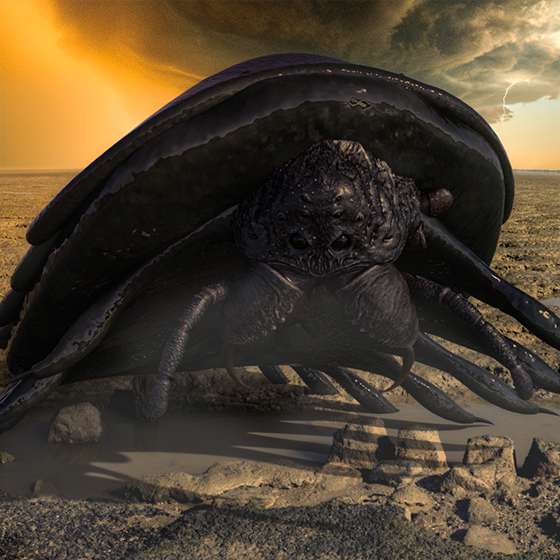Mekilliot (Me Kill e lot)
Basic Information
Biological Traits
The females are larger than males.
Genetics and Reproduction
Mating season takes place yearly in the month leading up to the rainy season.
Mekilliots lay their eggs into deep mud pits during the raining season. The female lays a clutch of 10-50 eggs. The sex of the mekillot hatchlings depends on the temperature at which the eggs are incubated therefore a clutch will all be the same sex. Hot temperatures are needed for females to be produced.
The eggs incubate nearly a full year and then hatch during dry season. The first mekillot to hatch devours the eggs that would have been its siblings, in order to gain the strength to struggle to the ground surface.
Mekilliots lay their eggs into deep mud pits during the raining season. The female lays a clutch of 10-50 eggs. The sex of the mekillot hatchlings depends on the temperature at which the eggs are incubated therefore a clutch will all be the same sex. Hot temperatures are needed for females to be produced.
The eggs incubate nearly a full year and then hatch during dry season. The first mekillot to hatch devours the eggs that would have been its siblings, in order to gain the strength to struggle to the ground surface.
Growth Rate & Stages
Maturity is reached at around 12 years of age, and though their potential lifespans in the wild are unknown, mekilliots are believed to be capable of living up to 300 years of age. In captivity, they typically live from anywhere between 100 to 170 years of age.
Dietary Needs and Habits
The dietary habits of the mekilliot are such that they only eat every one to two months. When it does come time to feed they will eat everything they can. They are the only known creature that will eat a Kawana. (This is thought to be because they have no sense of smell) In this time they will generally consume half their body weight in food. Even for water, the mekilliot can go many days before even needing to drink again.
Additional Information
Social Structure
In the wild, most are solitary until it comes time for mating.
Domestication
Due to their massive strength and the ability to not get exhausted, they are used very often to pull massive wagons throughout the Bregritopia Empire . Mekilliot's requires a special driver that they have bonded with. Drivers for mekilliots start their training when they are first hatched to create an initial bond between the beast and the driver.
Uses, Products & Exploitation
Upon death the hide can be cleaned and used to make special armor.
Perception and Sensory Capabilities
The creature has no apparent eyes they seem to use thier antane to navigate on thier own. When linked with a gnome he controlls the beast most of the time.
Symbiotic and Parasitic organisms
Sand Gnome can link and control them.
Lifespan
150
Average Height
13-15 ft normally, 25-35 feet when reared up for feeding or attacking.
Average Weight
12-15 tons
Average Length
30-40 ft
Related Materials



Comments